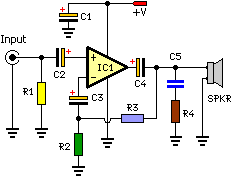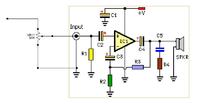analyndalin
Newbie level 6
- Joined
- Aug 3, 2010
- Messages
- 12
- Helped
- 2
- Reputation
- 4
- Reaction score
- 2
- Trophy points
- 1,283
- Location
- philippines
- Activity points
- 1,356
what value of potentiometer will i use for the volume control of this audio amplifier circuit and in what place will i connect that?

thank you

thank you

